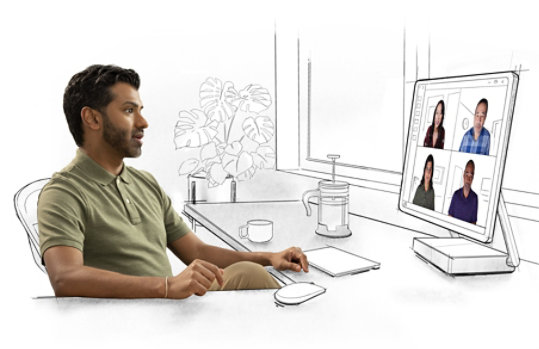
This is going to take work
Academics, behavioral scientists, and others have examined the intentional actions that can help us to recalibrate our learned behaviors, ideas, biases, and beliefs.
Let’s learn about ourselves and others, and then do the work to adopt new behaviors that drive inclusion.
Exploring concepts and identities
At Microsoft we’re looking to sociology, psychology, behavioral science and neuroscience to understand what leads to exclusion, and to find effective ways to change our habits and behaviors, and deepen our understanding.

Inclusion and bias
This course introduces unconscious bias, and how it affects the workplace and decisions we make. Throughout the modules, there will be opportunities to reflect and actively work on disrupting and proactively counteracting our bias. (Optimized for desktop use.)

Inclusion and covering
This course provides an introduction to covering, as developed by Kenji Yoshino. It discusses his theory of the four core types of covering demands and the practical steps each of us can take to address them. (Optimized for desktop use.)

Inclusion and allyship
This course provides an introduction to the concept of allyship. It offers practical suggestions to increase self-awareness about our own allyship journey and steps to become an ally to all and an adversary to none. (Optimized for desktop use.)

Inclusion and privilege
This course provides a foundational understanding of privilege. We’ll learn what privilege is, why it matters, how it connects with our identity, how it is shaped by systems of power, and how we can leverage it to support others. (Optimized for desktop use.)

Introduction to gender and sexual orientation
This video, developed in partnership with Out and Equal and PDT Global, explores the topics of gender identity, gender expression, and sexual orientation. Likewise, it provides insight into unique challenges facing LGBTQIA+ communities.



Follow Microsoft